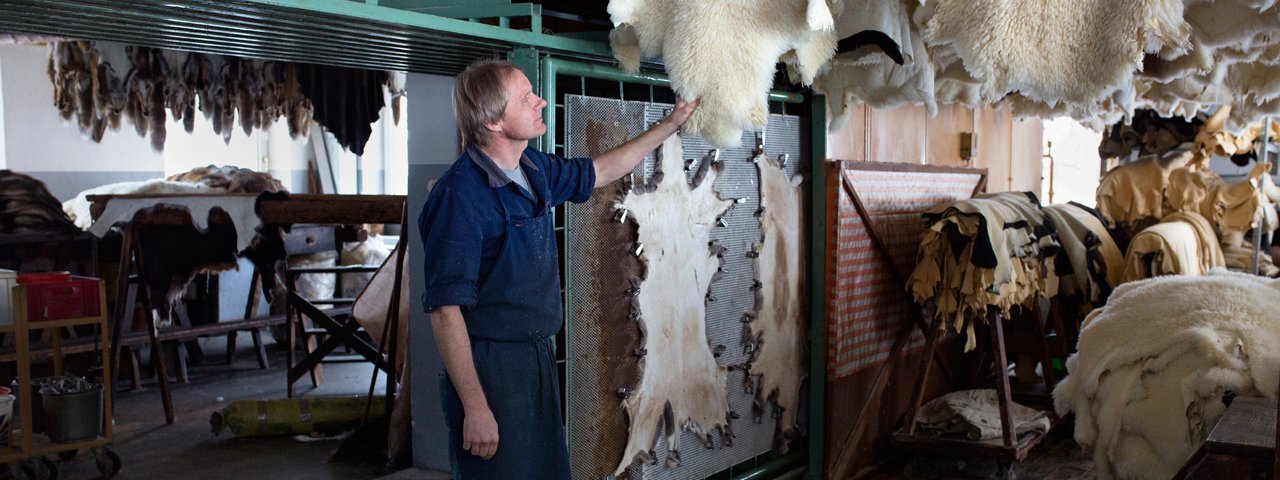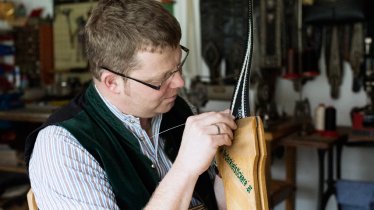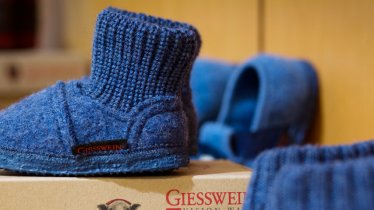Johann Niederkofler runs a leather tanning business in Brixen im Thale where this traditional craft dating back thousands of years is today still performed with the same passion, pride and attention to detail.
Johann Niederkofler is the fourth generation of his family to run the Gerberei Johann Niederkofler tannery, which also includes a shop selling traditional clothing such as Lederhosen made using fine leather tanned in the workshop next door.
Ancient craftsmanship
The high-tech breatheable materials used these days to make many clothes, in particular sportswear, were only introduced towards the end of the 20th century. Before that, humans used animal skins and fur for many millennia to protect themselves against the cold, rough ground, etc. However, such organic materials have one major disadvantage: they decompose over time. Therefore, many thousands of years ago, our ancestors developed ways of making animal skins tougher and more resistent to this natural decomposition process.
The technique used today to tan skin is essential the same as all those years ago – tanning agents are applied to the skin in order to prevent natural organisms from causing it to rot. The main difference between the modern tanning process and that used in the past – or, you could also say, the main difference between the techique used today in huge industrial tanning centres such as those in India and that employed by small family-run businesses such as that run by Johann Niederkofler – is that the latter place great value on ensuring that neither people nor the environment suffer as a result. Johann Niederkofler and his team specialise in wet white tanning (which uses minerals to tan the leather) and fish-oil tanning. Both techniques, which date back many centuries and are only performed by a handful of trained experts, produce particularly fine leather such as glacé leather.
Johann Niederkofler is the fourth generation of his family to run the Gerberei Johann Niederkofler tannery, which also includes a shop selling…










